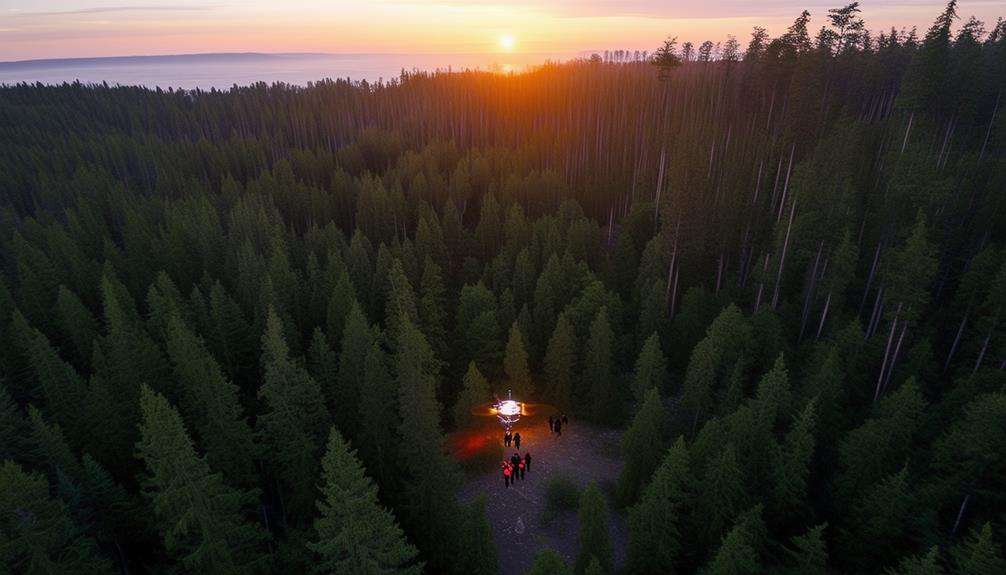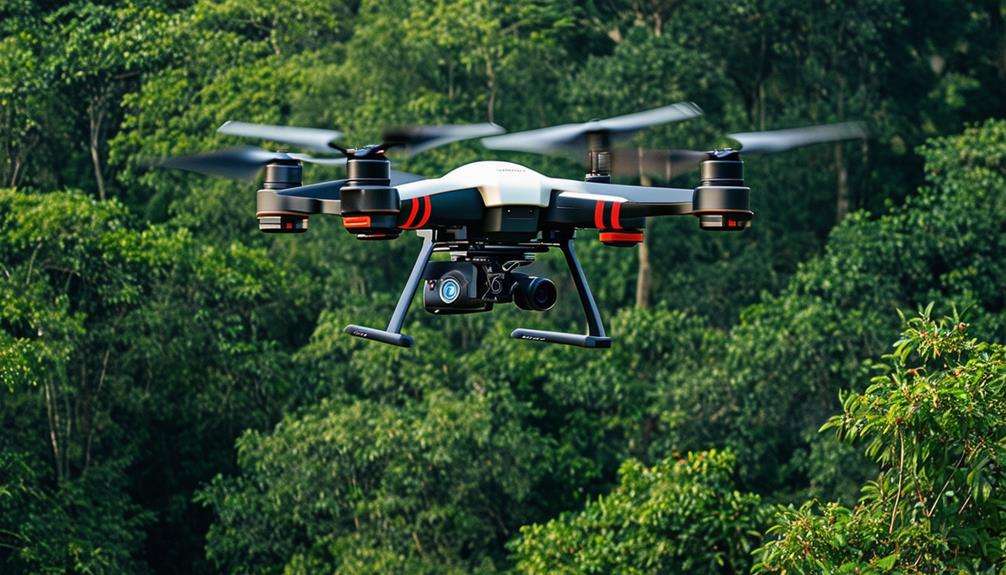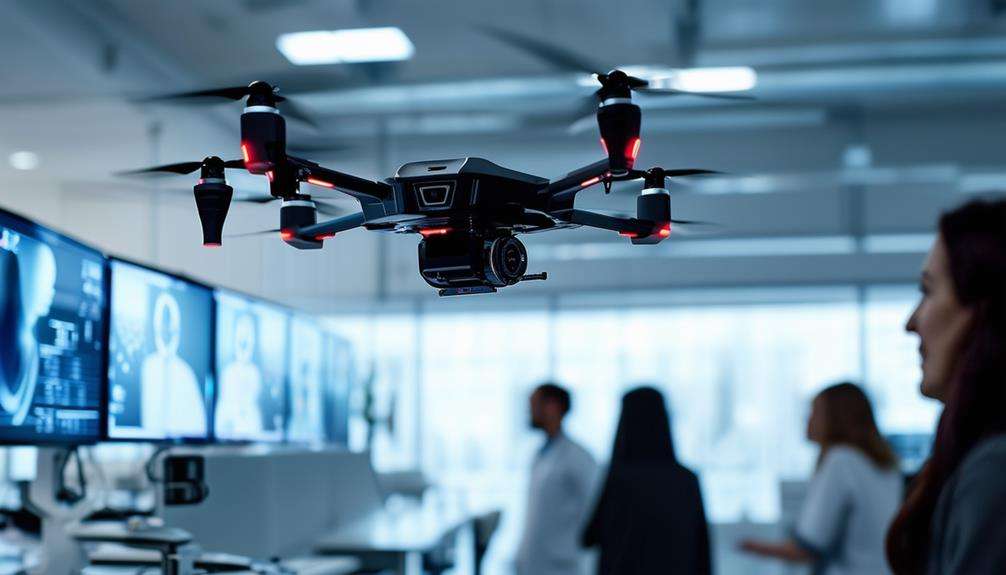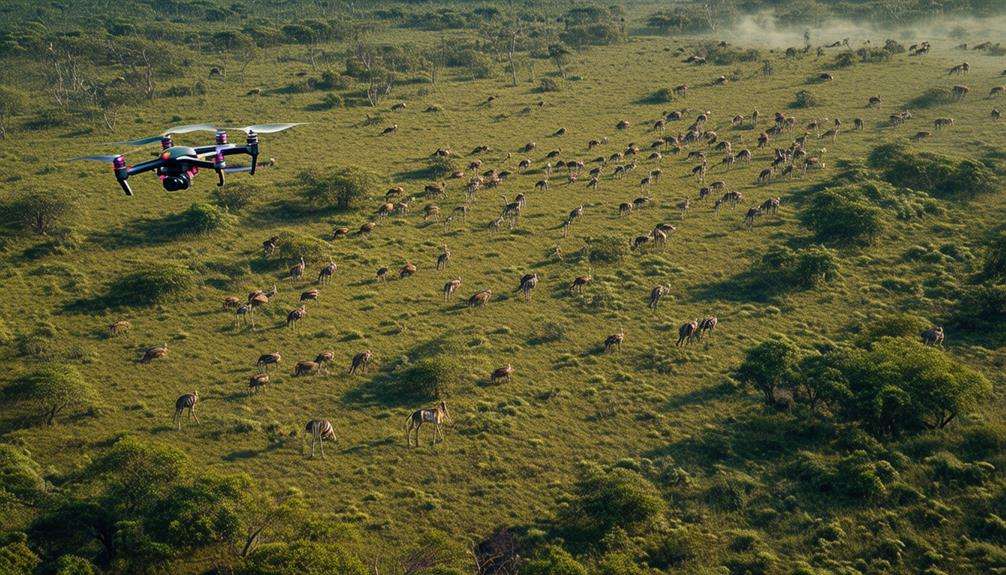Were Drones Used in WWII?
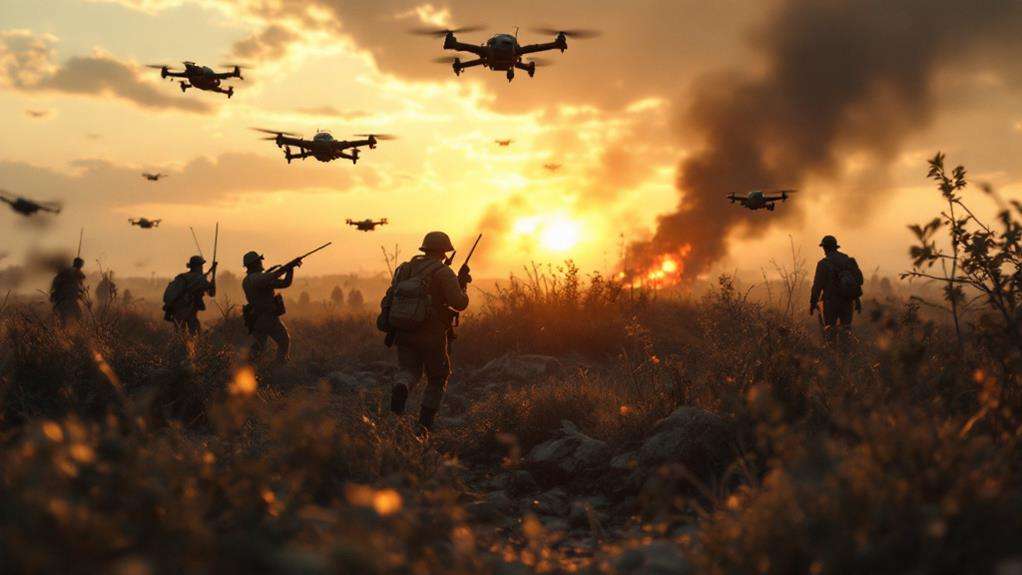
Yes, drones were used during WWII, and they played a surprisingly pivotal role. You'll find that the U.S. Army employed the Radioplane OQ-2, the first mass-produced drone, for training by simulating enemy aircraft. These early drones were crucial for reconnaissance and gathering intelligence on enemy movements. The Germans also utilized the V-1 flying bomb, a precursor to modern cruise missiles. Drones from this era showcased advances in remote control and guidance systems, shaping future warfare strategies. These innovations laid the groundwork for today's UAV technology, and there's more to uncover about their impact and evolution.
Key Takeaways
- Drones were used in WWII primarily for training, reconnaissance, and guided missile technology advancement.
- The Radioplane OQ-2 was the first mass-produced drone for military training purposes.
- The TDR-1 drone conducted bombing and intelligence missions in the Pacific Theater.
- German V-1 Flying Bomb marked the first operational use of cruise missile technology.
- WWII drones laid the foundation for modern UAV advancements in military operations.
Origins of WWII Drones
Building on innovations from World War I, the origins of WWII drones are rooted in early advancements like A.M. Low's Aerial Target and the Kettering Bug. These early developments paved the way for the unmanned aircraft that would see operational use during World War II. The first operational drone to be produced on a large scale was the Radioplane OQ-2, developed by Reginald Denny. Nearly 15,000 units were manufactured for the U.S. Army, marking a significant step in the evolution of drone technology. During World War II, drones like the Radioplane OQ-2 were primarily used for training and target practice. These radio-controlled devices allowed soldiers to hone their skills against moving targets, simulating real combat scenarios without risking human life. In addition to these applications, drones also demonstrated potential in combat roles. The TDR-1 drone, for instance, conducted bombing runs and gathered valuable intelligence in the Pacific Theater, highlighting the early combat applications of this technology. While Germany focused on missile development, the Allies' use of drones showed that unmanned aircraft could provide strategic advantages despite the era's technological constraints. This laid the groundwork for future advancements in drone warfare.
Key Drone Models
During World War II, several key drone models emerged that shaped the landscape of unmanned aerial technology. Among them, the Radioplane OQ-2 stands out as the first mass-produced drone. Developed by Reginald Denny, about 15,000 units were manufactured for the U.S. Army. This UAV was primarily used for training anti-aircraft gunners, highlighting its role as a target drone. The Midge Surveillance Drone also marked significant progress in reconnaissance during this period. The Kettering Bug was an early prototype of aerial torpedoes, designed to carry explosives and strike targets up to 40 miles away. Although it didn't see combat, it laid the groundwork for future developments. The TDR-1, used by the U.S. Navy, demonstrated the practical application of drones in warfare through bombing and reconnaissance missions.
The German V-1 flying bomb, a pivotal weapon during WWII, transformed UAV concepts into reality. It became the first operational cruise missile used in combat, showcasing the destructive potential of unmanned technology. Meanwhile, British innovations like the Fairey Queen and DH.82B Queen Bee served primarily as target drones. The latter even popularized the term "drone" in the 1930s, cementing its place in aviation history as an early UAV.
Reconnaissance and Training Use
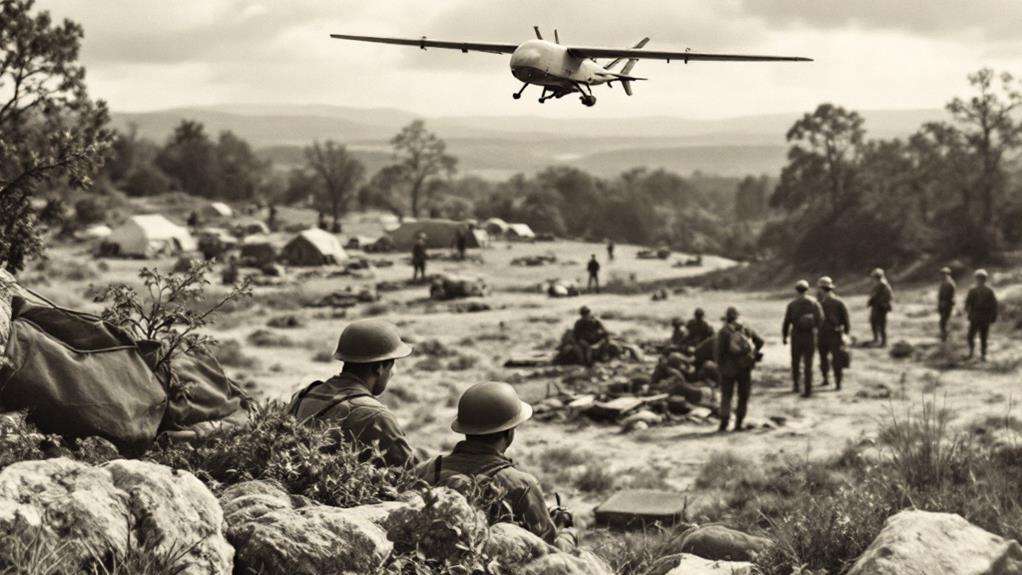
World War II saw drones transform military training and reconnaissance operations. You'd find drones primarily used to train anti-aircraft gunners. This provided a safe and effective way to practice targeting without risking human pilots. One of the most widely used drones for target practice was the Radioplane OQ-2, developed by Reginald Denny. Nearly 15,000 units were produced for the U.S. Army. These radio-controlled drones became a staple in military training, honing the skills of countless personnel.
In addition to their training role, drones played a pivotal part in reconnaissance missions. Models like the TDR-1 provided valuable intelligence by conducting bombing runs and gathering crucial data on enemy positions and movements. Although their direct combat use was limited, these reconnaissance missions were essential for strategic planning and successful operations.
The U.S. Navy also employed radio-controlled drones for target practice in the Pacific Theater. This allowed naval and air personnel to train effectively, improving their readiness for the challenges of war. By using such technology, WWII drones laid the groundwork for future UAV advancements, proving their worth in both training and reconnaissance endeavors.
Technology Advancements
Significant technological advancements during WWII laid the foundation for modern drone technology, with major improvements in remote control and guidance systems. You can trace the origins of today's unmanned aerial vehicles (UAVs) back to this era. The U.S. Navy's work with the Curtiss N2C-2 drone in the 1930s was pivotal, demonstrating the potential of radio-controlled aircraft in military operations. These early experiments enhanced target practice methodologies and set the stage for the widespread use of drones.
One of the most notable developments was the Radioplane OQ-2, the first mass-produced drone with almost 15,000 units manufactured. It was primarily used as a target drone, advancing flight stability and control systems. This led to more precise training and testing environments for anti-aircraft gunners. The V-1 flying bomb, derived from earlier UAV designs like the Kettering Bug, showed the offensive potential of drones. It became the first operational cruise missile, marking a significant shift in how military strategies could incorporate UAVs.
During WWII, drones like the TDR-1 conducted bombing runs and gathered vital intelligence, proving their worth in reconnaissance. These technology advancements fueled post-war interest in UAVs, paving the way for future innovations.
Impact on Warfare
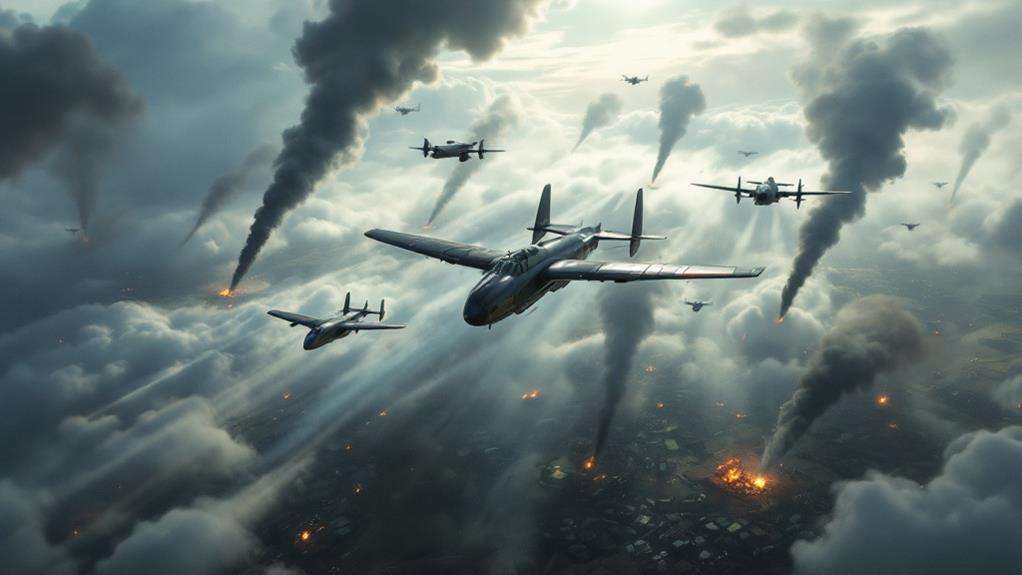
In WWII, drones fundamentally changed warfare by introducing new tactics and technological capabilities. For the first time, unmanned aerial vehicles (UAVs) like the Radioplane OQ-2 allowed the military to conduct extensive training and target practice without risking human lives. Over 15,000 of these drones were deployed, showcasing the transformative impact of drone technology on military strategies.
The aerial innovations didn't stop there. The Kettering Bug, an early aerial torpedo, highlighted the potential for UAVs to deliver explosive payloads over distances of up to 40 miles, marking a significant advance in remote-controlled weaponry. Similarly, the German V-1 flying bomb became the first operational cruise missile, signaling a shift towards more sophisticated guided missile technology.
Drones also emerged as vital tools for reconnaissance missions, offering unprecedented intelligence and target data. This capability allowed military forces to gain a strategic advantage, influencing operations and decision-making processes during the war. The advancements made in remote control and guidance systems laid the groundwork for the development of modern drones. The impact of WWII drones was profound, reshaping how wars were fought and setting the stage for future technological advancements in aerial combat.
Legacy and Future Influence
Building on the technological strides made during WWII, drone technology has left a lasting legacy that continues to shape military and civilian applications today. The first UAVs, like the Radioplane OQ-2, demonstrated the strategic potential of drones for the Army in aerial reconnaissance and target practice. These early models set the stage for modern UAV design by highlighting the importance of radio guidance systems, a technology that was crucial then and remains so now. Despite their limitations, these drones paved the way for advancements in remote piloting and automation, vital for today's sophisticated UAVs.
The experiences gained from WWII drone operations informed post-war military strategies, emphasizing the integration of unmanned systems into air power. As you look at current military and civilian uses, you'll see how these early efforts influenced today's UAV capabilities, promoting operational transparency and ethical considerations in modern warfare. The legacy of WWII drones persists not just in technological advancements but also in shaping discussions about the future of air power. As UAV technology continues to evolve, its roots in WWII underscore a journey of innovation, illustrating how past developments continue to influence today's strategic and ethical landscapes.

